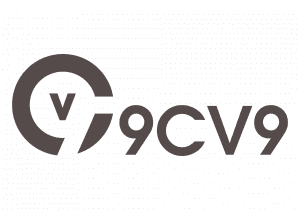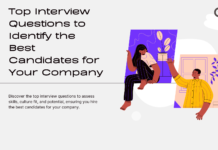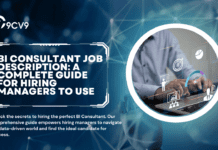Key Takeaways
- France’s hiring market in 2025 is driven by digital transformation, flexible work models, and high demand for skilled professionals.
- Talent shortages across IT, healthcare, and engineering are pushing employers to focus on reskilling and international recruitment strategies.
- Recruitment agencies play a crucial role in navigating compliance, market shifts, and sourcing talent amid evolving economic conditions.
The hiring and recruitment landscape in France is undergoing a transformative shift in 2025, shaped by a confluence of economic recovery, digital acceleration, evolving workforce expectations, and sector-specific talent demands. As France continues to rebound from recent global disruptions, the country’s labor market is experiencing a notable restructuring—fueled by government labor reforms, increasing investments in technology, and a growing emphasis on green and digital jobs. These developments are significantly influencing how companies attract, engage, and retain talent in an increasingly competitive and candidate-driven environment.

With unemployment rates gradually stabilizing and job vacancies on the rise, employers across France are adopting more flexible recruitment strategies to respond to emerging trends such as hybrid work models, the gig economy, and a heightened focus on diversity, equity, and inclusion (DEI). The recruitment process is no longer limited to traditional methods, as companies are increasingly leveraging AI-driven tools, employer branding, and remote sourcing to secure top talent in critical fields like IT, healthcare, finance, and engineering. Additionally, an aging population and skills mismatch continue to challenge HR professionals, prompting greater investments in training, upskilling, and cross-border recruitment.
France’s hiring climate in 2025 is also shaped by shifting candidate priorities. Today’s job seekers are not just looking for a paycheck—they are prioritizing meaningful work, work-life balance, and company values that align with their own. This trend forces employers to rethink their value propositions, enhance workplace culture, and develop robust employee engagement strategies to remain competitive in attracting high-quality talent.
Moreover, regional hiring disparities and sectoral imbalances are increasingly apparent, with major cities like Paris, Lyon, and Toulouse witnessing booming demand in tech and innovation sectors, while rural regions face difficulties in filling roles in agriculture, logistics, and healthcare. Recruitment agencies and staffing firms are playing a crucial role in bridging this gap by offering localized insights, streamlining talent pipelines, and ensuring compliance with French labor laws.
As we delve deeper into 2025, understanding the current state of hiring and recruitment in France becomes essential for employers, HR professionals, and job seekers alike. This blog offers an in-depth exploration of the key hiring trends, recruitment challenges, economic influences, and strategic approaches that are shaping France’s workforce ecosystem in 2025—equipping readers with the knowledge needed to navigate this evolving employment landscape effectively.
Before we venture further into this article, we would like to share who we are and what we do.
About 9cv9
9cv9 is a business tech startup based in Singapore and Asia, with a strong presence all over the world.
With over nine years of startup and business experience, and being highly involved in connecting with thousands of companies and startups, the 9cv9 team has listed some important learning points in this overview of The State of Hiring and Recruitment in France for 2025.
If your company needs recruitment and headhunting services to hire top-quality employees, you can use 9cv9 headhunting and recruitment services to hire top talents and candidates. Find out more here, or send over an email to [email protected].
Or just post 1 free job posting here at 9cv9 Hiring Portal in under 10 minutes.
The State of Hiring and Recruitment in France for 2025
- France’s Economic Outlook for 2025: A Macroeconomic Context
- French Labor Market Dynamics and Employment Trends
- In-Demand Skills and Critical Talent Shortages
- Evolving Recruitment Strategies and Technological Adoption
- Compensation and Benefits Landscape
- Candidate Expectations and Workforce Preferences
- Diversity, Equity, and Inclusion (DEI) in French Hiring
- Regulatory Changes and Government Policies Impacting Hiring
- Strategic Recommendations for 2025
1. France’s Economic Outlook for 2025: A Macroeconomic Context
France’s labor market outlook in 2025 is shaped by a confluence of macroeconomic factors, policy adjustments, and international uncertainties. With sluggish economic growth, persistent fiscal constraints, and rising unemployment, the recruitment and hiring landscape is expected to undergo a phase of recalibration. Both employers and job seekers must navigate this evolving environment with a strategic and data-driven approach.
Macroeconomic Landscape and Its Influence on Employment
Projected GDP Growth: Marked Deceleration
- France’s GDP growth is anticipated to slow considerably:
- 2025 forecast: 0.6%–0.7% (vs. 1.1% in 2024)
- Institutions such as the Banque de France and IMF converge on a 0.6% growth figure
- BNP Paribas offers a slightly more optimistic projection at 0.7%
- Primary drivers of slowdown:
- Tight fiscal policy reducing public investment and consumer spending
- Lingering global economic instability, particularly from trade policy uncertainty
Inflation Trends: Downward Pressure on Prices
- Overall inflation is projected to ease significantly:
- Headline inflation (HICP): 0.9%–1.0% in 2025
- Core inflation (excludes energy and food): ~1.9%
- Energy prices expected to decline by 5.0%
- Implications for hiring:
- Lower inflation may support real wage stability, but subdued demand dampens job creation
Labor Market Conditions: Rising Unemployment and Employment Contraction
Unemployment Outlook
- Unemployment is forecast to rise due to weaker economic activity:
- European Commission: 7.9% unemployment in 2025
- Banque de France and OECD: 7.8% average for 2025 and 2026
- Q1 2025 snapshot:
- ILO unemployment rate: 7.4%
- Number of unemployed: 2.4 million
- Slight increase from the historical low of 7.1% (Q4 2022–Q1 2023)
Job Market Softening and Employment Decline
- Employment contraction is likely:
- BNP Paribas: Predicts 100,000 net job losses in 2025
- Employment expected to decline by 0.2%
- First instance of net job losses since the pandemic
- Impacts will be most visible in:
- Export-dependent sectors
- Government-funded employment programs
- Non-essential service industries
Fiscal and Global Headwinds: Constraints on Hiring and Recruitment
Contractionary Fiscal Policies
- Fiscal tightening directly affects employment:
- Government deficit: Expected to decrease slightly to 5.6% of GDP in 2025
- Gross public debt: Forecasted to rise from 113.0% (2023) to 116.0% (2025)
- Resulting challenges:
- Reduced public sector hiring
- Delayed or cancelled infrastructure and development projects
- Private sector cautiousness in expanding workforce
International Trade Frictions and External Risks
- Global trade dynamics are weighing on demand:
- Net exports: Projected to subtract 0.3 percentage points from GDP growth
- US trade policy alone: Estimated negative impact of 0.2 percentage points on growth (2025–2027)
- Sectors at risk:
- Manufacturing and export-heavy industries
- Automotive, aerospace, and luxury goods
- Strategic implication:
- Businesses may need to diversify export markets or reorient toward domestic demand
Hiring Implications and Recruitment Dynamics
Job Market Power Shift
- Employers likely to hold more leverage in the labor market:
- Larger talent pool due to higher unemployment
- Greater selectivity in hiring processes
- Pressure on wage growth and benefit offerings
Recruitment Strategy Adjustments
- Expected trends for employers:
- Prioritization of temporary and flexible contracts
- Focus on automation and productivity-enhancing tools
- Conservative approach to permanent role creation
- Candidates may need to:
- Upskill or reskill to stay competitive
- Emphasize cross-functional capabilities and international experience
- Prepare for longer recruitment timelines and more rigorous screening
Key Economic Forecast Matrix: France (2024–2026)
| Indicator | 2024 | 2025 | 2026 | Source |
|---|---|---|---|---|
| GDP Growth (%, year-on-year) | 1.1–1.2 | 0.6–0.7 | 1.0–1.3 | Banque de France, IMF |
| Inflation (HICP, %, yoy) | 2.3 | 0.9–1.0 | 1.2–1.4 | European Commission |
| Core Inflation (%, yoy) | ~2.5 | ~1.9 | ~2.0 | Banque de France |
| Unemployment Rate (%) | 7.4 | 7.8–7.9 | 7.4–7.8 | OECD, Banque de France |
| Employment Growth (%) | +0.3 | -0.2 | +0.4 | BNP Paribas |
| Net Job Gains/Losses (est.) | +150,000 | -100,000 | +120,000 | BNP Paribas |
| Government Deficit (% of GDP) | -5.8 | -5.6 | -5.7 | European Commission |
| Gross Public Debt (% of GDP) | 113.0 | 116.0 | 118.4 | IMF, EC |
Note: Forecasts represent mid-range estimates and are subject to revision as new data becomes available.
Conclusion: A Cautious Outlook for Recruitment in 2025
France’s employment landscape in 2025 is poised for a period of relative stagnation. With fiscal tightening, low growth, and rising unemployment shaping the labor market, employers are expected to adopt a cautious hiring stance. Job seekers, on the other hand, will face intensified competition and may need to pivot strategies to remain employable.
While the current macroeconomic outlook presents several challenges, it also offers a strategic window for businesses to reevaluate talent acquisition models and for workers to invest in adaptability and resilience.
2. French Labor Market Dynamics and Employment Trends
The French labor market in early 2025 reflects a complex balance between relative short-term stability and deeper structural softening across industries. While the headline numbers suggest a stabilization in private payroll employment following previous quarters of contraction, a closer examination reveals clear signs of sector-specific stress, reduced hiring momentum, and cautious employer behavior amid broader economic uncertainty.
Private Payroll Employment in Q1 2025: Macro Trends
General Observations
- Private payroll employment in France posted a neutral 0.0% change in Q1 2025, equating to a marginal net gain of 9,400 jobs.
- This comes after a 0.3% decrease in Q4 2024, or 68,000 job losses, signaling a potential temporary stabilization rather than a trend reversal.
- When compared to Q1 2024:
- Employment dropped by 0.3% (or -69,900 jobs).
- However, job levels remain significantly above pre-pandemic baselines, exceeding Q4 2019 levels by +5.5% (or +1.1 million jobs).
Interpretation of Trends
- The apparent stability in Q1 2025 is likely transitory, following Q4 2024’s sharper decline.
- Despite a modest quarter-on-quarter gain, year-on-year comparisons show contraction, reinforcing the broader theme of labor market softening.
- The data points to a labor market experiencing a short-term plateau rather than a fundamental turnaround.
Sectoral Employment Performance: Divergence Across Industries
A more granular look at key sectors reveals a mixed performance, underlining the uneven impact of economic forces across the labor market.
Sector-Wise Payroll Employment Shifts – Q1 2025
| Sector | Q1 2025 (Jobs) | Q1 2025 (%) | vs Q1 2024 (Jobs) | vs Q1 2024 (%) | vs Q4 2019 (Jobs) | vs Q4 2019 (%) |
|---|---|---|---|---|---|---|
| Total Private Payroll | +9,400 | 0.0% | -69,900 | -0.3% | +1,100,000 | +5.5% |
| Temporary Employment | -1,900 | -0.3% | -44,600 | -5.9% | -66,000 | -8.5% |
| Agriculture (excl. temp) | -1,400 | -0.5% | N/A | -1.0% | N/A | +6.3% |
| Industry (excl. temp) | 0 | 0.0% | +2,000 | +0.1% | +77,900 | +2.5% |
| Construction (excl. temp) | -10,800 | -0.7% | -32,400 | -2.1% | +57,500 | +3.9% |
| Market Services (excl. temp) | +900 | 0.0% | -16,100 | -0.1% | +852,400 | +7.3% |
| Non-Market Services (excl. temp) | +22,600 | +0.8% | +24,500 | +0.9% | +158,900 | +6.1% |
Source: INSEE, Q1 2025 Preliminary Estimates
Key Takeaways by Sector
- Temporary Employment
- Continued to decline for a second straight quarter
- Down 5.9% YoY and 8.5% below pre-pandemic levels
- Reflects employers’ reluctance to commit to flexible labor under uncertainty
- Agriculture
- Small quarterly contraction of 0.5%, reflecting seasonal and structural volatility
- Industrial Employment
- Remained flat in Q1 2025, showing resilience
- +0.1% YoY and +2.5% vs. pre-COVID, indicating stable long-term growth
- Construction
- Sustained downturn over nine consecutive quarters
- Down 2.1% YoY, reflecting reduced public investment and weak demand in residential construction
- Market Services
- Employment was flat after a Q4 decline
- Slight YoY drop (-0.1%), but +7.3% above 2019, highlighting long-term expansion in service industries
- Non-Market Services
- Strong rebound in Q1 2025 (+0.8%), driven by growth in healthcare, education, and public services
Job Vacancy Trends by Industry
Job Vacancy Rates (Q1 2025)
| Industry Group (NACE Rev. 2) | France | Euro Area Avg | Highest Sectoral Vacancy Rates (Euro Area) |
|---|---|---|---|
| Industry & Construction (B–F) | 2.3% | 2.4% | Construction – 3.1% |
| Services (G–N) | 2.4% | 2.4% | Accommodation & Food – 3.4% |
| Admin & Support Services – 3.9% | |||
| Prof. & Technical Services – 3.3% | |||
| Information & Communication – 2.7% |
Source: Eurostat, 2025 Q1
Observations
- France’s job vacancy rates are largely aligned with Euro Area averages, suggesting:
- Modest hiring appetite across industries
- Potential mismatch between skills supply and demand in select sectors
- High vacancy rates in service-heavy sectors indicate:
- Labor shortages or high turnover
- Ongoing demand in sectors with low stability or seasonal hiring patterns
Regional Employment Patterns
Geographic Variations in Payroll Employment (Q1 2025)
- National change: -0.1% quarter-on-quarter
- Year-on-year change (Mar 2024–Mar 2025): -0.3%
- Regions with employment contraction:
- Auvergne-Rhône-Alpes: -0.2%
- Bourgogne-Franche-Comté: -0.2% to -0.3%
- Territoire de Belfort: -1.2%
- Cantal and Alpes-de-Haute-Provence: -0.7%
- Regions with slight growth:
- La Réunion (Overseas): +0.2%
Implications
- Regional disparities suggest:
- Stronger labor resilience in overseas territories and larger metro areas
- Heightened vulnerability in rural or manufacturing-heavy departments
- Regional recruitment agencies and employers may need to tailor hiring strategies based on local labor availability and economic activity
Conclusion: Navigating an Uneven Labor Market in France (2025)
The French hiring environment in 2025 reflects a fragile equilibrium—marked by temporary stabilization in aggregate employment, but with clear sectoral and regional vulnerabilities. Employers continue to exercise caution, particularly with regard to temporary and construction-based roles, while service-based industries remain more resilient.
Key implications for recruiters and workforce planners include:
- Anticipate further softening in temporary and construction employment through H2 2025.
- Leverage resilient sectors such as healthcare, public services, and technical support for stable hiring opportunities.
- Adopt region-specific recruitment strategies to address localized labor market imbalances.
- Monitor vacancy rates in high-demand sectors to respond to workforce shortages or skills gaps.
France’s labor market trajectory in 2025 will likely depend on the interplay between domestic fiscal responses, global trade recovery, and the capacity of key sectors to adapt to continued macroeconomic headwinds.
3. In-Demand Skills and Critical Talent Shortages
France’s labor market in 2025 is characterized by a general softening in aggregate employment yet displays persistent pockets of acute talent scarcity. Employers in technical, service, and operational sectors continue to struggle in sourcing qualified candidates—highlighting structural mismatches and shifting recruitment dynamics.
High‑Demand Sectors & Sectoral Market Dynamics
Sectors Exhibiting Elevated Talent Needs
- Technology & Digital Services
- IT outsourcing projected to reach ~€23.6 billion in 2024, growing at ~7.4% CAGR through 2029.
- Surge in demand for AI, cybersecurity, and data engineering roles.
- Logistics & Supply Chain
- Logistics market valued at US $121.4 billion in 2024, forecast to reach US $190.6 billion by 2030 with 7.8% CAGR
- Rapid expansion of warehousing, last‑mile delivery, and transport functions.
- Healthcare & Personal Assistance
- Continued demand for nurses, caregivers, support workers, fueled by aging demographics and public health needs.
- Construction & Built Environment
- Building trades and civil engineering gaps exacerbated by infrastructure project roll‑outs and workforce aging.
- Hospitality & Food Service
- Despite macro slowdown, the sector remains understaffed; ~8,000 restaurants closed in 18 months due to staffing shortages.
Official Shortage Occupations List: 2025 Update
Government Prioritization & Policy Response
- On 22 May 2025, France revised its métiers en tension list to include 95 occupations with critical shortages.
- Expanded to ease hiring of non‑EU workers in sectors such as construction, agriculture, healthcare, hospitality, cleaning, and domestic caregiving.
- Notably, most engineering and technician roles were removed in regions with adequate domestic supply—a strategic shift toward essential service trades
Critical Occupations & Role-Specific Disparities
Listing of Scarce Occupations
Derived from the shortage list and industry analysis:
| Occupation | Economic Sector |
|---|---|
| Civil engineering and manufacturing labourers | Construction / Manufacturing |
| Truck, bus, tram drivers | Transport & Logistics |
| Mechanical & electrical machinery assemblers | Manufacturing / Assembly |
| Machine & plant operators | Industrial Production |
| Domestic cleaners, home helpers | Home Care / Domestic Support |
| Earthmoving / mobile farm machinery operators | Agriculture |
| Cooks, kitchen & restaurant staff | Hospitality and Food Services |
| Nurses, caregivers, personal support workers | Healthcare / Social Assistance |
| Web developers, IT engineers, data engineers | Technology / Digital Services |
| Renewable‑energy technicians | Energy / Sustainability |
| Accountants, finance professionals | Business Management / Finance |
- Retail and large‑scale distribution: ~318,000 job openings.
- Construction trades: ~272,990 roles.
- Installation & Maintenance: ~220,000 vacancies.
- Healthcare staff: ~204,860 offers.
- Industrial maintenance technicians: ~45,775 roles
Talent Shortage vs. Rising Unemployment
- Despite a modest rise in overall unemployment, skills gaps persist in key growth areas.
- The structural mismatch means displaced workers in declining sectors lack qualifications for emerging in‑demand roles.
- Businesses increasingly rely on upskilling, targeted training, and international recruitment to fill vacancies.
Essential Skill Gaps
- Digital & Technical Expertise: AI, machine learning, cybersecurity, data analytics dominate demand.
- Job postings for generative AI competencies increased nearly 6.8×; overall AI-related roles surged ~21%.
- Soft Skills: Communication, innovation, adaptability, leadership and collaboration essential for modern workplaces.
- Language Proficiency: Dual fluency in French and English increasingly preferred.
Regional Hotspots for Talent Demand
- Île‑de‑France (Paris region): Premier hub for technology, construction, logistics, high-volume recruitment.
- Toulouse: Aerospace and engineering innovation demand reinforce tech and engineering vacancies.
- Rennes: Emergent centre for cybersecurity, software development and digital culture.
- Auvergne‑Rhône‑Alpes, PACA: Consistent demand in healthcare, construction, logistics and personal services.
Job Vacancy Rate Comparison (Q1 2025)
| Sector (NACE Rev. 2) | France Vacancy Rate | Euro Area Avg | Comments |
|---|---|---|---|
| Industry & Construction (B–F) | 2.3% | 2.1% | Strong demand in transport & logistics |
| Services (G–N) | 2.4% | 2.7% | Elevated in hospitality & admin sectors |
| Administrative & Support | — | 3.9% | High turnover; continued recruitment |
| Accommodation & Food Services | — | 3.4% | Ongoing shortage of kitchen staff |
| Professional & Technical | — | 3.3% | Tech and consultancy hiring remains active |
Note: France does not publish sub‑sector rates within services identically to Euro Area data
Strategic Implications for Employers & Recruitment
- Cross‑sector talent migration is limited; unemployed talent often lacks the qualifications for high‑demand roles.
- Organizations should:
- Establish targeted upskilling programmes aligned with sector-specific shortages.
- Utilize regional workforce planning, aligning hiring to geographic demand hotspots.
- Leverage foreign hire pathways facilitated by the revised shortage occupation list.
- Employers focusing on sectors like healthcare, hospitality, construction, logistics, and digital services may need balanced strategies including education partnerships, apprenticeship schemes, and streamlined visa sponsorships.
Summary Insight Matrix: 2025 Talent Demand vs. Labor Supply
| Dimension | Demand | Supply Gap / Trend |
|---|---|---|
| Temporary & Low‑Skill Sectors | High demand in hospitality, domestic services | Domestic labor insufficient; reliance on foreign workers |
| Technical & Digital | Strong need for AI, IT engineers, data roles | Limited domestic pipeline; engineering roles depopulated from shortage list |
| Construction & Trade | Civil labourers, trades, installers | Aging workforce; unmet training efforts |
| Healthcare & Social Assistance | Nurses, caregivers, support staff | Chronic shortages; growing unmet population needs |
| Logistics & Transportation | Drivers, warehouse operators, planners | Logistics market expanding rapidly; automation lagging |
| Regional Focus | Paris, Toulouse, Rennes, regionals | Regional mismatches; rural decline vs. urban pressure |
France’s labor market in 2025 is defined by structural divergence: while macro trends show weakening overall hiring, critical shortages persist in high-value and essential service roles. Employers and policymakers must respond with targeted training, immigration reform, and regionally sensitive workforce strategies to address the growing mismatch between demand and availability in the most pressured sectors.
4. Evolving Recruitment Strategies and Technological Adoption
The French recruitment ecosystem in 2025 is experiencing profound structural transformation, driven by the confluence of technological innovation, regulatory shifts, and modernized candidate evaluation frameworks. In an increasingly competitive talent market, organizations across sectors are recalibrating their hiring strategies by adopting AI-powered systems, investing in employer branding, and placing greater emphasis on skills-based hiring.
Transformational Trends in Recruitment Methodologies
Modern Candidate Evaluation Techniques
Recruitment in France is increasingly aligned with experiential and skills-based assessment tools, reflecting a broader move toward competency validation over traditional CV-based screening.
- Gamification and Simulation-Based Assessments
- Leading companies now deploy real-world business case challenges to gauge candidates’ critical thinking, collaboration, and adaptability.
- Prominent example: L’Oréal’s Brandstorm, an internationally recognized initiative, involves students tackling actual business problems, simulating strategic innovation environments.
- These assessments foster deeper insights into candidate potential—particularly effective for identifying high-potential junior talent and specialized roles.
- Business Games and Team Exercises
- Widely used in graduate and early-career hiring, these collaborative simulations assess soft skills such as teamwork, leadership, and resilience.
- Large enterprises in sectors like consulting, retail, and tech are at the forefront of integrating interactive challenge-based recruitment models.
Digital Transformation and AI Integration in Recruitment
Market Overview: Digital Shift in Talent Acquisition
- The French digital transformation market is projected to hit $40.3 billion in 2025, with expectations to exceed $91.08 billion by 2030.
- This robust trajectory (CAGR: 17.71%) is indicative of widespread digitization across sectors including public services, healthcare, manufacturing, and finance.
Accelerating Adoption of AI in Recruitment
- France is investing €2.5 billion from 2025 to scale up its AI capabilities as part of its national innovation strategy.
- AI is now embedded in core HR processes, driving automation in:
- Candidate sourcing
- Predictive hiring
- Bias detection and resume parsing
- Behavioral analysis via chatbots
- Globally, 78% of companies reported using AI in recruitment in 2024—up from 55% in 2023.
Growth of the ATS Ecosystem
| Metric | 2025 Value | 2032 Projection | CAGR (2025–2032) |
|---|---|---|---|
| Global ATS Market Size | $17.22 billion | $30.51 billion | 8.5% |
| Adoption Rate in Europe | High | Steady Increase | |
| Key Players in France | iSmartRecruit, Longlist, TriSys | – |
- Features such as AI-powered candidate-job matching, workflow automation, and centralized dashboards are becoming standard across recruitment platforms.
Legal Landscape: Navigating the EU AI Act
Compliance Obligations in High-Risk Use Cases
- Under the EU AI Act, recruitment tools powered by AI are classified as “high-risk applications.”
- Implementation Deadline: February 2025
- Implications for French employers:
- Mandatory algorithmic transparency
- Auditing for bias and fairness
- Risk documentation and usage protocols
- Small and medium enterprises (SMEs) face significant challenges balancing AI adoption with regulatory compliance, prompting a shift toward certified, low-risk AI platforms.
Recruitment Efficiency and Benchmark Metrics in 2025
Quantitative Insights: Hiring Funnel & Conversion Rates
| Recruitment Metric | France (2025) | Global Benchmark |
|---|---|---|
| Median Time to Fill | 39 days | 42 days (global avg) |
| Average Applications per Role | 93 | 72 |
| Candidates Invited to Interview | 2.2% | 6% |
| Candidates Receiving Job Offers | 0.6% | 1.5% |
| Offer Acceptance Rate | 92% | 86% (global avg) |
| Average Monthly Hires per Recruiter | 20 | 30 (industry avg) |
| Time-to-Hire Improvement with AI Integration | 26% faster | – |
| Recruiter Productivity Gain (w/ Centralized ATS) | +30% | – |
| Applications per Job Posting (ATS-enabled) | +60% | – |
Interpretation:
- France’s recruitment process is highly discerning, filtering aggressively in early stages but yielding exceptionally high offer acceptance—suggesting effective targeting and strong employer value propositions.
- AI-enabled organizations reduce manual work by up to 80% and show measurable improvements in speed and productivity.
Internal Mobility and Sourcing Channels
Sources of Hire: Internal vs. External Trends
| Hiring Channel | France (2025) | Global Average | Notable Trends |
|---|---|---|---|
| Internal Promotions | 4% | 18% | Underutilized in France |
| Employee Referrals | 40% above global | – | 3x higher than in Australia |
| Direct Job Boards & Career Sites | Dominant | – | Enhanced by SEO, AI-matching |
- French companies rely significantly on external sourcing, underleveraging internal talent pools—a potential area for efficiency gains.
- Employee referrals serve as a highly effective acquisition channel, outperforming paid advertising and third-party agencies in both speed and quality of hire.
Employer Branding as a Strategic Asset
Shaping Perceptions in a Competitive Market
- 70% of French recruitment professionals cite employer branding as a top priority for 2025.
- Candidates expect:
- Transparency on compensation, benefits, and advancement.
- Personalization: Over 50% want companies to understand their career goals and skillsets before initiating hiring conversations.
- Authentic engagement: Organizations with clear social impact missions and positive Glassdoor reviews have better retention and offer conversion.
A well-articulated employer brand directly correlates with shorter time-to-hire, lower cost-per-hire, and stronger cultural alignment.
AI vs. Human Hiring Matrix
| Process Phase | Human-Led | AI-Led | Future Direction |
|---|---|---|---|
| Sourcing & Screening | Manual, CV review | AI resume parsing, predictive scoring | Hybrid |
| Interview Scheduling | Time-consuming | Automated chatbots and calendar AI | Fully Automated |
| Candidate Assessment | Subjective evaluations | Gamified & data-driven assessment tools | Data-Augmented Human Oversight |
| Decision Making | Recruiter consensus | AI insights + human validation | Compliance-led AI with ethical guardrails |
| Post-Hire Onboarding | HR driven | Digital onboarding platforms | Personalized Onboarding Journeys (AI-powered) |
Strategic Takeaways for Employers
- Invest in AI-enabled, compliant recruitment technology to improve time-to-hire and scalability.
- Prioritize ethical AI auditing to meet EU AI Act standards before the February 2025 enforcement deadline.
- Shift toward experiential assessment techniques like business simulations to attract high-caliber talent.
- Expand focus on employee referrals and brand transparency to boost sourcing efficiency.
- Build a skills-based hiring model rather than over-relying on legacy qualifications.
5. Compensation and Benefits Landscape
The French employment market in 2025 reflects a stabilizing salary environment, rising expectations for non-monetary benefits, and a nuanced regional disparity in wages. As inflation tapers, compensation strategies are shifting toward selective wage growth and expanded value-added perks to attract and retain talent in a competitive and cautious hiring climate.
Salary Landscape in France (2025)
Average and Median Compensation Insights
- Average Private Sector Net Salary: €2,735/month
- Average Public Sector Net Salary: €2,530/month
- Average Private Gross Annual Salary: €43,356
- Median Salary (All Sectors): €2,183/month
- Gap Between Median and Average: 20%+, indicating high top-tier earnings concentration
- Public Sector Median: €2,260/month
Breakdown by Socio-Professional Category (Private Sector)
| Category | Average Net Monthly Salary (€) |
|---|---|
| Executives (Cadres) | ~4,570 |
| Intermediate Professions | ~2,660 |
| Manual Workers (Ouvriers) | ~2,030 |
| Employees (Employés) | ~1,960 |
Public Sector Wages by Service Type
| Sector | Avg. Net Monthly Salary (€) |
|---|---|
| State Public Service | ~2,743 |
| Hospital Public Service | ~2,734 |
| Territorial Public Service | ~2,145 |
Regional Salary Disparities
- Île-de-France: Highest average net salary (~€3,519/month)
- Lower-paying Regions: Brittany, Bourgogne-Franche-Comté, Corsica (~€2,370)
- Lowest Average: Creuse (Nouvelle-Aquitaine) at ~€2,058/month
These regional wage disparities stem from economic diversity, sectoral concentration, urbanization, and access to high-skill employment clusters.
Projected Salary Increases for 2025: A Comparative Overview
Despite a cooling inflation rate, wage growth in France remains cautious but competitive. Employers are recalibrating salary strategies to align with cost constraints while ensuring market relevance.
| Source | Projected Avg. Increase (%) | Notes |
|---|---|---|
| WTW | 3.5% (Median) | Moderate increase with cautious optimism |
| Ravio | 5.5% (Average) | Slight dip from 2024, aligned with EU trends |
| Banque de France | ~2.0% | Negotiated increases exceed inflation (1.5%) |
| ECB Wage Tracker | 3.8% | Reflects wage growth from collective bargaining (excluding bonuses) |
- Basic Wage Growth (Q1 2025): +2.1% YoY
- Salary Strategy Trend: Focused on targeted wage increases for high-demand roles and top performers, rather than uniform hikes.
Comprehensive Benefits in France (2025)
Social Security & Cost of Employment
- Employer Contributions: ~45% of gross salary
- Employee Contributions: ~23%
- Impact: High fixed labor costs influencing hiring caution, especially for permanent contracts
Key Social Benefits
- Healthcare: 70% covered by the state; private supplementary insurance (“Mutuelle”) often provided by employers
- Sick Leave:
- State covers 50% salary for 90 days
- Employers frequently top up to 100%
- Pension System:
- State Pension: ~€1,400/month max after full career
- Complementary Pension (AGIRC-ARRCO): Adds 30–40% of final salary
- Voluntary Savings Plan (PER): Up to 10% of salary; tax deductible
Paid Leave and Public Holidays
- Minimum Paid Vacation: 5 weeks annually
- Public Holidays: 11 nationwide
- Parental Leave:
- Maternity: 16–26 weeks (depending on number of children)
- Paternity: 25–32 days
- Unpaid Leave: Up to 3 years per child
Other Perks
- Meal Vouchers: Employers cover 50–60% of lunch costs
- Transport Subsidies: Employers legally required to reimburse 50% of public transportation for employees
Emerging Trends in Employee Benefits (2025)
Most Offered Benefits
| Benefit Type | % of Companies Offering (France/EU) |
|---|---|
| Hybrid Work Model | 96% |
| Company Social Events | 73% |
| Employee Training | 62% |
Personalization of Benefits
- 65% of employees are open to exchanging current perks for customized options
- Only 14% of global firms have systems in place for personalized benefits
- Main Employer Priorities:
- Cost control (70% list it as top concern)
- Managing medical inflation
- Expanding inclusive benefits:
- Family-focused policies (54%)
- Aging workforce needs (39%)
- Gender-specific initiatives (39%)
- Support for low-income staff (39%)
Visual: Compensation Distribution Matrix (Private Sector, France 2025)
| Position Tier | Monthly Salary (€) | Growth Priority | Competitiveness |
|------------------------|--------------------|------------------|------------------|
| Executives | ~4,570 | Medium | High |
| Skilled Professionals | ~2,660 | High | Medium |
| Blue-Collar Workers | ~2,030 | Low | Low |
| Entry-Level Employees | ~1,960 | Low | Low |
Key Takeaways: Compensation Trends in France 2025
- Wage growth is moderate yet strategically deployed
- Non-monetary benefits are expanding in influence and scope
- Hybrid work and personalization of perks are driving employer differentiation
- Social security costs remain a barrier to permanent hiring growth
- Regional disparities persist and affect both recruitment and retention strategies
6. Candidate Expectations and Workforce Preferences
In 2025, France’s labor market is experiencing a profound transformation as job seekers redefine their priorities. While compensation remains relevant, French professionals are placing greater emphasis on work-life integration, psychological well-being, and alignment with organizational values. This evolution reflects broader socio-economic shifts and legislative influences, particularly in a nation renowned for its employee-centric labor policies.
Evolving Job Seeker Priorities
Salary vs. Work-Life Balance: A Nuanced Trade-off
- According to the Randstad Workmonitor 2025, work-life balance has overtaken salary as the number one global job priority.
- Despite this trend, 54% of French job seekers still identify salary as their foremost criterion when choosing an employer, indicating that financial remuneration remains foundational.
- This duality reflects a value recalibration—salary must meet expectations, but non-monetary benefits now drive differentiation between employers.
Emerging Factors Influencing Job Applications
| Candidate Priority | Percentage (%) |
|---|---|
| Employer Reputation | 64% |
| Job Stability | 63% |
| Geographic Location | 61% |
| Competitive Salary | 57% |
| Proximity to Family | 68% (High/Medium) |
| Transparent Benefits & Career Growth | >50% |
- Candidates desire clarity and openness on compensation structures, advancement opportunities, and values alignment.
- Economic instability continues to weigh heavily, with 36% citing financial uncertainty as the most stressful element of the job search.
Work-Life Balance and Demand for Flexibility
Cultural Imperative for Flexibility
- The notion of “work to live” remains deeply embedded in French culture, supported by legislative safeguards such as:
- 35-hour legal workweek
- Five weeks of mandatory paid vacation
- “Right to disconnect” laws (in effect since 2017 for companies with 50+ employees)
Hybrid and Remote Work Preferences
| Work Model Preference (2025) | % of Respondents |
|---|---|
| Hybrid Work (preferred overall) | 48% |
| Fully Remote | 26% |
| On-site Preference (if hybrid not possible) | 77% |
- An overwhelming 70% of workers in France express interest in hybrid or remote models.
- 96% of French companies now offer hybrid arrangements, highlighting employers’ responsiveness to this shift.
- Retention Impact: 76% of workers say flexibility affects their willingness to remain at a company.
Student Preferences
- 67% of European students prefer in-person roles if hybrid is unavailable, but this rises to 77% among French students, indicating a strong desire for physical presence balanced by autonomy.
Workplace Culture and Psychological Well-being
Company Culture as a Key Employer Brand Metric
- In 2025, 73% of French organizations are proactively strengthening team cohesion through regular social interactions and workplace bonding activities.
- Organizational culture focused on “care” is emerging as a dominant trend, with measurable benefits on performance and well-being.
Mental Health and Employee Engagement
| Cultural Element | Impact on Workforce |
|---|---|
| Feeling “Cared For” | 84% less burnout risk |
| Recognition Programs | 57% reduction in burnout |
| Increased Engagement | 12x more likely in supportive workplaces |
- Mental health initiatives and emotional recognition correlate directly with reduced attrition and higher productivity.
- Despite 65% of employees in France reporting overall engagement, scores remain below global benchmarks in categories like motivation and organizational pride.
Talent Attraction Strategy: Key Implications for Employers
To remain competitive in 2025’s rapidly shifting French recruitment landscape, companies must respond to candidate demands with nuanced strategies that prioritize:
- Transparent compensation frameworks aligned with market expectations.
- Tailored flexibility that gives employees a sense of control, without defaulting to fully remote models.
- Holistic employee support focusing on mental health, appreciation, and workplace culture.
- Location and proximity considerations, especially for young graduates balancing familial and career interests.
- Proactive talent engagement, including personalized skill and career development conversations, to foster long-term organizational alignment.
Summary Matrix: Candidate Expectations vs. Employer Response in France (2025)
| Job Seeker Expectation | Current Employer Response | Alignment Level |
|---|---|---|
| Competitive Salary | Standardized offers | Medium |
| Work-Life Balance | 96% offer hybrid options | High |
| Mental Health Support | 73% invest in social/cultural care | Medium-High |
| Transparent Career Pathing | Partially implemented | Medium |
| Recognition & Engagement | Growing trend | Improving |
Final Insight
The state of hiring in France for 2025 is characterized by a paradigm shift—from transactional job elements to relational and human-centered values. In order to attract and retain top talent, especially among a generation increasingly driven by meaning, autonomy, and balance, employers must redefine their employer value propositions. Those who prioritize empathy, flexibility, and cultural inclusivity will gain a decisive advantage in a candidate-driven market.
7. Diversity, Equity, and Inclusion (DEI) in French Hiring
As France confronts the challenges and opportunities of a rapidly evolving workforce, Diversity, Equity, and Inclusion (DEI) have emerged as strategic imperatives, not just ethical priorities. Regulatory frameworks, social shifts, and performance-linked outcomes are compelling organizations to embed DEI deeply into recruitment and talent management strategies.
Gender Equality and Pay Equity: Legislative Reform and Workplace Impact
Regulatory Overhaul Driven by EU Directives
- France is preparing to revamp its Gender Equality Index by 2027, aligning with the EU Pay Transparency Directive.
- The goal: eliminate unexplained pay disparities and standardize pay reporting across organizations.
- New legislative mandates for employers:
- Mandatory disclosure of salary ranges in job advertisements.
- Ban on prior salary inquiries during recruitment.
- Right of access for employees to average pay data by position.
Current Progress and Continuing Gaps
- While the 2025 average Gender Equality Index score stands at 88.5/100, wage disparities persist:
- Women earn 14.9% less on average than men in equivalent roles.
Gender Equality Index – Comparative Scores (2025)
| Indicator | BofASE Score | BofA Europe, France Branch | National Average |
|---|---|---|---|
| Pay gap (max 40 pts) | 35 | 21 | 29 |
| Pay increases (non-promotional, max 20 pts) | 20 | N/A | 20 |
| Pay increases (promotional, max 35 pts) | N/A | 35 | N/A |
| Promotion rates (max 15 pts) | 10 | N/A | 15 |
| Maternity return pay increase (max 15 pts) | 15 | 15 | 15 |
| Female representation in top 10 highest paid (max 10 pts) | 5 | 0 | 5 |
| Total Index Score (out of 100) | 85 | 71 | 84 |
Note: Some indicators vary for companies with fewer than 250 employees.
Strategic Implications for Employers
- Employers must:
- Redesign compensation policies to reflect objective market values rather than legacy pay.
- Build transparent and auditable salary bands by role and level.
- Prepare for increased administrative oversight and potential penalties for non-compliance.
Disability Inclusion: Legal Requirements and Labor Market Integration
Employment Quotas and Participation Growth
- French law mandates that employers with 20+ employees maintain at least 6% of their workforce as disabled workers.
- Marked improvement over two decades:
- 2002: 2.1% of workforce were people with disabilities.
- 2023: 4.3% of workforce; 1.2 million disabled individuals employed (vs. 500,000 in 2002).
Apprenticeship Uptake Among Disabled Workers
| Year | Number of Apprenticeships by Disabled Workers |
|---|---|
| 2005 | 1,900 |
| 2023 | 14,444 |
Persistent Disparities
- Unemployment rate among disabled individuals: 12%
- General unemployment rate: 7%
- Indicates ongoing barriers in:
- Long-term employment retention
- Career progression access
- Workplace accessibility and support structures
Ethnic Diversity and Multicultural Integration
Legal Constraints on Data Collection
- Since 1978, France bans the collection of ethnic data in censuses, complicating DEI measurement by race or ethnicity.
Available Insights from Executive Diversity Research
- According to McKinsey (2025):
- 39% of French executives have foreign ancestry.
- 64% possess diverse national origins, though only 36% self-identify as “diverse”.
- Language integration among migrant workers is successful:
- 89% of newcomers speak French at work within 4 years of arriving.
Business Case for DEI: Tangible Performance and Recruitment Gains
Quantified Impact of Inclusive Practices
| Outcome | DEI-Linked Benefit |
|---|---|
| Innovation likelihood | 1.7x higher in inclusive companies |
| Cash flow per employee | 2.3x greater |
| Profitability (ethnic diversity top quartile) | 36% higher |
| C-suite gender diversity impact | Up to 50% higher profitability |
| Decision quality and speed | 87% better; 2x faster |
| Turnover reduction | 30% lower in inclusive organizations |
Talent Attraction and Retention Effects
- 76% of employees consider DEI important when evaluating job offers.
- 81% of employers believe cutting DEI would harm business performance.
- Yet, only 42% tie DEI outcomes to leadership KPIs, exposing a gap between belief and accountability.
Risks to DEI Continuity Amid Economic Pressures
Potential Setbacks Due to Budget Cuts
- Economic slowdowns and cost-saving strategies threaten DEI continuity.
- Reduction in DEI budgets, headcount, or visibility could:
- Erode employer reputation.
- Trigger talent attrition, particularly among diverse and underrepresented groups.
- Undermine long-term productivity and innovation.
Strategic Solutions
- Embed DEI metrics into:
- Performance reviews
- Succession planning
- Retention and promotion tracking
- Shift from compliance-focused initiatives to culture-driven transformation.
Summary Matrix: State of DEI in French Recruitment (2025)
| DEI Dimension | Current Status (2025) | Strategic Need |
|---|---|---|
| Gender Pay Equity | Progressing but gaps remain (14.9%) | Enforce transparency and salary range disclosures |
| Disability Employment | Participation increasing (4.3%) | Enhance retention, training, and advancement programs |
| Ethnic Diversity | Measured via proxy metrics | Develop inclusive language and integration pathways |
| Executive Diversity Metrics | 64% national origin diversity, 36% self-identified | Align leadership evaluations with DEI outcomes |
| DEI Budget Protection | At risk due to economic conditions | Tie DEI to business KPIs to secure funding and impact |
Final Insight
The DEI landscape in France’s 2025 recruitment ecosystem is transitioning from compliance to value creation. Companies that embed equity, inclusion, and representation into the core of hiring practices stand to gain not only reputational advantages but also measurable performance benefits. As regulatory expectations rise and the talent market grows more discerning, the capacity to sustain DEI in times of uncertainty will separate market leaders from laggards in both recruitment and growth.
8. Regulatory Changes and Government Policies Impacting Hiring
France’s labor market in 2025 is undergoing significant transformation driven by evolving government legislation, immigration reform, digital compliance, and labor law modernization. These regulatory shifts are reshaping how businesses hire, onboard, and manage talent, particularly across sectors facing structural labor shortages and digital disruption.
Immigration Policy Overhaul and Foreign Talent Mobility
Revised Shortage Occupation List (Effective May 22, 2025)
- Expanded to prioritize high-need sectors: healthcare, hospitality, cleaning, agriculture, and manual industries.
- Key engineering and technician roles removed, except in specific regional zones, to reflect localized workforce planning.
- Employers hiring for listed roles are now exempt from labor market testing, expediting foreign recruitment processes.
- Undocumented workers employed in these sectors may be eligible for regularization through temporary residence permits.
Enhanced Talent Permit Schemes
| Permit Type | Purpose | Minimum Salary | Key Benefit |
|---|---|---|---|
| Talent – Medical & Pharmacy | For non-EU doctors, dentists, midwives, pharmacists | €41,386.48 | 4-year renewable residency; no separate work permit required |
| Talent – Qualified Employee | Merged scheme for graduates and intra-company transferees | €35,891 | Simplifies skilled talent entry; promotes labor mobility |
| EU Blue Card (intra-EU mobility) | For existing Blue Card holders in EU states | Varies by role | Processing reduced from 90 to 30 days |
Anticipated Regulatory Trends
- Stricter French language proficiency requirements for residence and employment permits expected by late 2025.
- Political proposals from far-right parties may seek to:
- Prioritize hiring of French nationals.
- Impose tax penalties on hiring non-EU employees—introducing future legal uncertainty.
Apprenticeship Scheme Reform: Economic Balancing vs. Talent Pipeline
2025 Financial Adjustments to Employer Support
| Policy Change | Effective Date | Previous Policy | Revised Policy |
|---|---|---|---|
| Single hiring aid (companies <250 employees) | Feb 24, 2025 | €6,000 | €5,000 |
| Social charge exemption for apprentice salaries | Mar 1, 2025 | 79% | 50% |
| Flat-rate contribution to training centers | Jul 1, 2025 | None | €750 per contract for Bac+3 and above |
| Performance-based training funding | Jul 1, 2025 | Full upfront funding | 10% withheld until full contract completion |
Implications for Employers
- Rising apprenticeship costs may reduce participation among SMEs.
- Employers may shift focus to lower-education-level contracts to contain cost.
- Risks include a contraction in higher education-level apprenticeships, weakening future skilled labor availability.
Labor Law Developments Reshaping Employment Norms
Key 2025 Labor Code Updates
- Remote Work Protections
- Employees cannot be forced back to office if remote work was contractually or customarily established.
- Exceptions apply only in crisis scenarios (e.g., epidemics or force majeure).
- Fixed-Term Contracts (CDD)
- Employers must justify all CDDs with clear, temporary purpose.
- Mandatory waiting periods between sequential CDDs for the same role limit abuse.
- Paid Leave Rights
- Following EU Commission intervention (June 18, 2025), France may revise the Labor Code to:
- Allow postponement of paid leave during sick leave, aligning with EU standards.
- Following EU Commission intervention (June 18, 2025), France may revise the Labor Code to:
- Senior Workforce Integration
- As of May 7, 2025:
- Companies with 300+ employees must negotiate senior employment measures every three years.
- Mandated mid-career and end-of-career interviews to support older worker retention.
- As of May 7, 2025:
Recruitment Compliance Under the EU AI Act
AI Tools in Hiring Classified as “High-Risk”
- AI systems used in recruitment, assessment, or scoring fall under strict EU compliance obligations.
- Requirements effective by February 2025 include:
- Bias audits
- Data quality controls
- Transparent documentation
- Human oversight mechanisms
Enforcement and Legal Authority
- France’s data regulator CNIL is expected to become the enforcement body for AI compliance in hiring.
- Violations of the AI Act’s provisions (e.g., behavioral manipulation, social scoring) may result in significant penalties.
| AI Regulation Timeline (France) | Requirement |
|---|---|
| August 1, 2024 | EU AI Act enters into force |
| February 2, 2025 | Ban on manipulative and exploitative AI practices |
| February 2025 | Mandatory compliance for high-risk AI systems |
| August 2025 | Rules for general-purpose AI models take effect |
Strategic Response for Employers
- HR departments must conduct algorithmic impact assessments of AI tools.
- Procurement decisions must prioritize compliant AI vendors.
- Companies will need to train HR staff on ethical AI practices to meet regulatory and reputational standards.
Summary Matrix: Key Regulatory Shifts in France (2025)
| Policy Area | Change Introduced | Implications for Employers |
|---|---|---|
| Immigration | New shortage list, revised talent permits | Faster hiring for critical sectors, legal access for undocumented workers |
| Apprenticeships | Reduced aid, new fees, funding tied to outcomes | Increased training costs, especially for Bac+3 and above |
| Labor Code | Remote work rights, senior employee negotiations | Need for updated HR policies and age-inclusive workforce planning |
| Leave Rights | EU compliance on sick leave/paid leave overlap | Possible contract amendments to ensure legal alignment |
| AI in Hiring | Classified as “high-risk” under EU law | Requires audits, compliance infrastructure, and ethical oversight |
Final Insight
The French regulatory environment in 2025 reflects a strategic balancing act: safeguarding national labor interests, expanding access to international talent, and ensuring ethical compliance in a digitized recruitment landscape. While reforms like apprenticeship subsidies and immigration flexibility address critical skills gaps, tightening labor laws and AI compliance mandates signal a shift toward more accountable and transparent hiring ecosystems. Employers must now invest not only in sourcing talent—but in sustainable, legally compliant, and socially responsible recruitment models to thrive in this new regulatory paradigm.
9. Strategic Recommendations for 2025
The recruitment climate in France in 2025 is defined by a convergence of macroeconomic slowdown, deepening sectoral skills shortages, evolving workforce expectations, and landmark regulatory reforms. Employers and policymakers alike must recalibrate their strategies to remain resilient and competitive in this changing environment.
Macroeconomic Pressures vs. Talent Scarcity
Key Market Indicators (2025 Projections)
| Indicator | Forecasted Value | Implication |
|---|---|---|
| GDP Growth | 0.6–0.7% | Signals broader economic stagnation |
| National Unemployment Rate | 7.8–7.9% | Rising unemployment despite sector-specific shortages |
| Net Employment Change | –100,000 jobs | Indicates net job loss, particularly in temporary work arrangements |
| Temporary Employment Trend | Declining | Employers adopt cautious hiring strategies |
- While national employment weakens, acute labor shortages persist across:
- Healthcare
- Information Technology
- Construction and Skilled Trades
- Hospitality and Food Services
- 95 roles remain officially designated as “in-demand,” highlighting an enduring skills mismatch.
Strategic Recommendations for Employers in France
Workforce Planning & Targeted Talent Acquisition
- Align with Government Shortage Occupation Lists:
- Focus recruitment in sectors where talent permits offer streamlined access to international candidates.
- Proactively source talent in medical, hospitality, and trade occupations with immigration facilitation.
- Use Data-Driven Skills Gap Analysis:
- Map existing and future workforce needs by region and sector.
- Implement predictive analytics to forecast talent shortages before they impact operations.
Elevate the Employee Value Proposition (EVP)
- Move beyond salary by offering:
- Flexible work models (e.g., hybrid, remote-first)
- Career growth pathways
- Comprehensive wellness and mental health support
- Emphasize “care-centric cultures”:
- Prioritize team bonding, mental health services, and inclusive leadership.
- Organizations that demonstrate employee care see:
- 84% lower burnout
- 30% lower attrition rates
- 12x higher engagement scores
EVP Matrix: Shifting Employee Priorities in 2025
| Attribute | Importance Level | Effect on Retention |
|---|---|---|
| Work-Life Balance | Very High | Directly tied to loyalty |
| Flexibility | High | Top retention driver |
| Mental Health Support | High | Lowers burnout risk |
| Transparent Pay | Moderate–High | Increases trust |
| Company Culture | High | Enhances engagement |
Embed Diversity, Equity, and Inclusion (DEI) into Core Strategy
- Ensure Salary Equity:
- Prepare for EU Pay Transparency Directive compliance by auditing current pay structures.
- Eliminate historical salary queries and publish ranges in job ads.
- Institutionalize Inclusive Hiring:
- Embed anti-bias training into all levels of recruitment.
- Track DEI KPIs—especially hiring, promotion, and attrition rates by demographic segment.
Leverage Ethical Recruitment Technology
- Adopt AI with Caution:
- AI tools can boost efficiency—up to 26% faster time-to-hire and 30% productivity gain for recruiters.
- But they are now legally classified as high-risk under the EU AI Act.
AI Compliance Checklist for Hiring Tools (by February 2025)
| Requirement | Status Required |
|---|---|
| Bias Impact Assessment | Mandatory |
| Explainable Decision-Making | Mandatory |
| Human Oversight & Review | Required |
| Vendor Transparency | Legally Enforced |
| Data Privacy Safeguards | Strictly Regulated |
- Select AI vendors with certified compliance documentation.
- Document all algorithmic decisions impacting hiring to mitigate litigation risks.
Internal Mobility & Workforce Development
- Tackle Internal Hiring Gap:
- Only 4% of roles are filled internally in France—far below optimal levels.
- Launch structured reskilling and upskilling programs.
- Foster a culture of lateral movement and career reinvention.
- Benefits of Internal Mobility:
- Cuts hiring costs by up to 40%
- Increases retention by 2–3x
- Reduces onboarding time by 60%
Strategic Recommendations for Policymakers
Invest in Sector-Focused Reskilling
- Design vocational training that aligns with shortage sectors:
- Tech, green economy, healthcare, construction
- Prioritize marginalized populations:
- Support the 12% unemployed rate among people with disabilities via targeted job matching programs.
Adaptive Immigration Policy
- Continuously review shortage occupation lists against labor market data.
- Facilitate dynamic, responsive talent permit issuance with regional customizations.
Strengthen Apprenticeship Viability
Apprenticeship System Challenges (2025)
| Policy Adjustment | Impact |
|---|---|
| Reduced Hiring Aid (from €6,000 to €5,000) | Increases SME cost burden |
| Employer Co-financing for Bac+3+ | May reduce high-skill apprenticeship uptake |
| Delayed Funding Based on Completion | Disincentivizes longer-term contracts |
- Monitor business adoption closely.
- Adjust financing levers to sustain high participation rates in strategic disciplines.
Enforce Compliance and Provide Support
- Enforce upcoming:
- EU Pay Transparency Directive (e.g., publish pay bands, prohibit past salary questions)
- EU AI Act (e.g., audit high-risk AI systems used in recruitment)
- Provide compliance toolkits and funding support for SMEs to:
- Develop in-house compliance capacity
- Access legal guidance and digital audit services
Executive Summary Table: Strategic Action Points
| Stakeholder | Action Required |
|---|---|
| Employers | Build flexible EVP, audit compensation practices, invest in ethical AI systems |
| Policymakers | Fund reskilling, revise immigration lists, enforce pay and AI transparency laws |
| HR Leaders | Prioritize internal mobility, expand hybrid work, launch mental health programs |
| SMEs | Leverage public support tools for AI compliance and transparent recruitment |
Conclusion
As France progresses through 2025, the hiring and recruitment landscape continues to evolve, shaped by economic transitions, labor market reforms, talent shortages, and digital acceleration. French employers are rethinking their workforce strategies amidst rising operational costs, increasing demand for flexible employment models, and growing competition for highly skilled professionals in sectors such as technology, healthcare, engineering, and finance. The convergence of AI-powered recruitment technologies and human-centric hiring practices is redefining the standards of candidate experience, diversity initiatives, and employer branding across industries.
Amidst economic stabilization and moderate job creation forecasts, the French recruitment market is also witnessing a significant push toward reskilling and upskilling initiatives, driven largely by government support and private sector collaboration. The emphasis on sustainable hiring practices and equitable workforce participation aligns with France’s broader social and economic goals, offering recruitment firms and employers opportunities to build resilient talent pipelines. Remote and hybrid work models are no longer temporary trends but long-term expectations, requiring HR departments to redesign policies, compensation structures, and performance management systems.
Furthermore, recruitment agencies are playing an increasingly strategic role—not only in talent acquisition but also in workforce planning, market intelligence, and cross-border hiring. As France continues to attract international investors and expand its startup ecosystem, multilingual professionals and globally experienced candidates are in high demand, amplifying the relevance of international recruitment networks and digital hiring platforms.
In conclusion, hiring in France in 2025 is no longer just a transactional process—it’s a strategic lever for business growth, innovation, and competitive differentiation. Companies that proactively adapt to these hiring dynamics, embrace talent tech, invest in workforce development, and build inclusive recruitment frameworks will be best positioned to thrive in this increasingly complex and opportunity-rich labor market. As the recruitment environment becomes more global, data-driven, and employee-focused, agility and adaptability will define the future of work and workforce success in France.
If you find this article useful, why not share it with your hiring manager and C-level suite friends and also leave a nice comment below?
We, at the 9cv9 Research Team, strive to bring the latest and most meaningful data, guides, and statistics to your doorstep.
To get access to top-quality guides, click over to 9cv9 Blog.
People Also Ask
What are the key hiring trends in France for 2025?
The main trends include digital recruitment, remote work adoption, AI integration, and growing demand for specialized tech and healthcare roles.
Which industries are hiring the most in France in 2025?
Tech, healthcare, green energy, logistics, and financial services are leading hiring sectors in France this year.
Is remote work still popular in France in 2025?
Yes, hybrid and fully remote work models remain widely adopted, especially in tech, marketing, and consulting industries.
What roles are in highest demand in France in 2025?
Software developers, data analysts, nurses, cybersecurity experts, and renewable energy engineers are highly sought after.
How is AI impacting recruitment in France?
AI is automating candidate screening, improving job matching, and optimizing HR workflows across recruitment agencies and employers.
Are companies in France facing talent shortages in 2025?
Yes, especially in IT, healthcare, engineering, and skilled trades, driving up competition and salaries for qualified talent.
What is the average time to fill a job in France in 2025?
On average, it takes 30 to 45 days to fill a vacancy, depending on the role and industry.
How are recruitment agencies helping in 2025?
Agencies are offering end-to-end hiring support, including talent sourcing, compliance, onboarding, and global recruitment services.
What hiring platforms are popular in France in 2025?
LinkedIn, Welcome to the Jungle, APEC, Pole Emploi, and Indeed remain among the most used hiring platforms.
How are job seekers in France finding roles in 2025?
Through online job boards, networking events, recruitment firms, social media, and internal company referrals.
Are salaries increasing in France in 2025?
Yes, particularly in high-demand sectors like tech, healthcare, and finance due to competition for talent and inflationary pressure.
What are employers prioritizing in new hires?
Employers are focusing on adaptability, digital skills, industry certifications, and the ability to work in hybrid environments.
What are the major recruitment challenges in France in 2025?
Talent scarcity, high competition, candidate ghosting, compliance complexity, and remote onboarding are major hurdles.
Is freelance work growing in France?
Yes, freelance and gig work is expanding, especially in IT, design, writing, and consulting fields.
How are companies attracting talent in France?
Through employer branding, offering flexibility, competitive salaries, career development opportunities, and inclusive work culture.
What role does employer branding play in 2025?
It’s critical for attracting top talent, especially among Gen Z and Millennials who value company culture and mission.
How are startups hiring in France in 2025?
Startups are leveraging social media, niche platforms, and referral networks to find agile, tech-savvy professionals.
Are internships still relevant in France?
Yes, internships are a key entry point into full-time roles, especially for students in tech, business, and healthcare.
What’s the outlook for international hiring in France?
International recruitment is increasing to fill domestic skill gaps, especially in tech, engineering, and healthcare.
Are diversity and inclusion initiatives influencing hiring?
Yes, companies are implementing D&I policies to improve workplace equity and attract a wider talent pool.
What certifications are valuable in 2025?
Certifications in project management (PMP), cloud computing (AWS, Azure), data science, and cybersecurity are highly valued.
What is the legal hiring age in France?
The minimum legal age for employment is 16, with some restrictions for minors under 18.
Are hiring regulations changing in France in 2025?
Yes, there are new labor reforms emphasizing work-life balance, remote work laws, and transparency in pay structures.
What are candidates expecting from employers?
Candidates want flexible schedules, competitive pay, career growth, and meaningful, purpose-driven work environments.
Are temporary contracts still common in France?
Yes, fixed-term and temporary contracts remain widely used, particularly in retail, hospitality, and seasonal industries.
How is employee retention being addressed in 2025?
Companies are focusing on employee engagement, reskilling, internal mobility, and mental wellness programs to retain staff.
What cities have the highest job growth in France?
Paris, Lyon, Toulouse, Bordeaux, and Nantes are leading in job creation across multiple sectors.
What are the top skills employers want in 2025?
Digital literacy, communication, adaptability, problem-solving, and technical skills such as coding and data analytics.
How is recruitment technology evolving in France?
Recruitment tech is becoming more AI-driven, with chatbots, automated sourcing, and predictive analytics improving efficiency.
Is language fluency important in hiring?
Yes, fluency in French is essential for most roles, though English is also key in multinational companies and tech startups.
Sources
Banque de France
European Commission – Economy and Finance
Insee
OECD
BNP Paribas Economic Research
Eurostat
Michael Page
IMF
Workwell Global
Robert Half
Jobbatical
Planeta Formación
Eurojob-Consulting
LinkedIn Business Solutions
GlobeNewswire
Y-Axis
Fortune Business Insights
iSmartRecruit
Mordor Intelligence
Stanford HAI
AWS
Connexion-Emploi
Handshake
France Today
O.C. Tanner
Culture Amp
Worklife
Ravio
Brain Source
StockTitan
PR Newswire
WorldatWork
Market Research
WTW
ECB
Staffmatch
Envoy Global
Fragomen
Dechert
Corporate Immigration Partners
Dentons
JDSupra
French Business Advice
Addleshaw Goddard
Chambers and Partners
Wikipedia
European Commission – Home Affairs
Capgemini
SmartRecruiters
DLA Piper
SAP
Disability:IN
Agefiph
McKinsey
Bank of America
Seramount
Diversity.com
Morgan Lewis































![Writing A Good CV [6 Tips To Improve Your CV] 6 Tips To Improve Your CV](https://blog.9cv9.com/wp-content/uploads/2020/06/2020-06-02-2-100x70.png)


